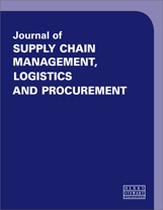Thriving in the digital age: The rise of the PAL supply chain and why businesses need a Copernican business revolution
Abstract
For those unaware of the process of creative destruction and the waves of technological change powered by it, this is a confusing and disorientating time. Unlike the downswing period from the late 1980s until the crash of 2008, the past can no longer be confidently used as an indicator of the future, which creates havoc for those tasked with developing plans and forecasts. In this world of uncertainty and unpredictability, resilience and agility have replaced cost-cutting and offshoring as supply chain leaders’ primary objective. The COVID-19 pandemic that swept across the globe in 2020 rapidly changed consumer behaviours and forced businesses to close, sending the world into government-mandated lockdown. Businesses were presented with a choice: adapt, rely on government-sponsored life support — or die. Yet, some companies have seen opportunity in the uncertainty, embracing the theory that the best way to predict the future in these uncertain times is to create it. They are experimenting with the revolutionary new technologies that have emerged during this wave, creating new business models that transform the supply chain but also exponentially increase its complexity. But to take advantage of these new machines requires a new mindset and a willingness to embrace new methods and management processes, which is where many companies are struggling. This paper aims to explain why this period of rapid, transformative change is happening, what changes we can expect throughout the decade, and how supply chain and business leaders need to adapt to not just survive through the period — but thrive.
The full article is available to subscribers to the journal.
Author's Biography
Sean Culey is an independent adviser on supply chain and business model transformation, the author of multiple articles and an award-winning keynote speaker. He is a visiting fellow at Cranfield University, a Fellow of the Chartered Institute of Logistics and Transport (FCILT) and a transformation adviser for the Association of Supply Chain Management (ASCM). He is also the UK’s only certified SCOR Master Instructor. He has 25 years’ experience in supply chain and business transformation, including ten years as the design authority on a US$600m global SAP implementation for Cadbury Schweppes, six years as CEO of a boutique business consultancy and Global VP of Marketing for a supply chain analytics company. He has worked with a diverse range of organisations across multiple industry verticals, including BAE Systems, UK Ministry of Defence, The United Nations, Avnet, USAID, Smith & Nephew, Sony, Saint Gobain and Warburtons. Sean is the author of the book Transition Point: From Steam to the Singularity, an in-depth examination of the causes of technological progress and how the current wave of change will disrupt our business models, economy and society at large, which was a finalist for Independent Book of the Year, 2019.
Citation
Culey, Sean (2021, June 1). Thriving in the digital age: The rise of the PAL supply chain and why businesses need a Copernican business revolution. In the Journal of Supply Chain Management, Logistics and Procurement, Volume 3, Issue 4. https://doi.org/10.69554/QIQR7335.Publications LLP
